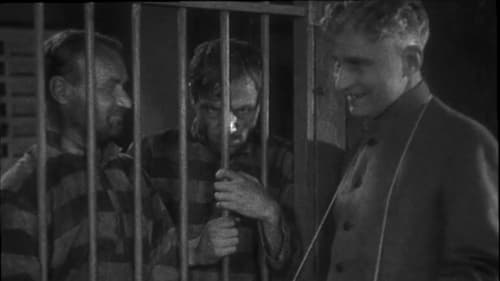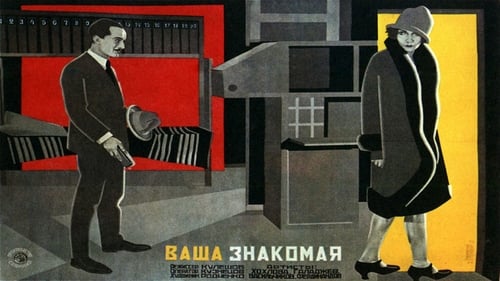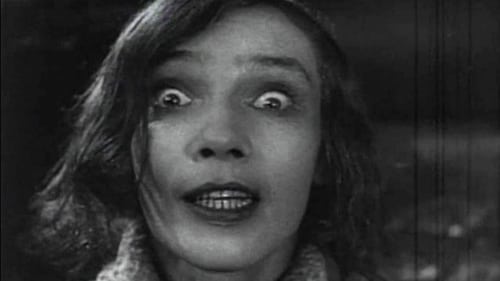
Lev Kuleshov
Nascimento : 1899-01-13, Tambov, Russian Empire (Russia)
Morte : 1970-03-29
História
Lev Vladimirovich Kuleshov was a Russian and Soviet filmmaker and film theorist, one of the founders of the world's first film school, the Moscow Film School. People's Artist of the RSFSR (1969).
Lev Kuleshov was born in 1899 into an intellectual Russian family. At the time he was born, the family became financially broke, lost their estate and moved to Tambov, living a modest life. In 1911 his father died; three years later Lev and his mother moved to Moscow where his elder brother was studying and working as an engineer. Lev Kuleshov decided to follow the steps of his father and entered the Moscow School of Painting, although he didn't finish it.
In 1916 he applied to work at the film company led by Aleksandr Khanzhonkov. He produced scenery several pictures but with time he became more interested in film theory. He co-directed his first movie Twilight in 1917. His next film was released under the Soviet patronage.
During the 1918-1920 he covered the Russian Civil War with a documentary crew. In 1919 he headed the first Soviet film courses at the National Film School. Kuleshov may well be the very first film theorist as he was a leader in the Soviet montage theory — developing his theories of editing before those of Sergei Eisenstein (briefly a student of Kuleshov).
For Kuleshov, the essence of the cinema was editing, the juxtaposition of one shot with another. To illustrate this principle, he created what has come to be known as the Kuleshov Effect. In this now-famous editing exercise, shots of an actor were intercut with various meaningful images (a casket, a bowl of soup, etc.) in order to show how editing changes viewers' interpretations of images.
In addition to his theoretical and teaching work, Kuleshov also directed a number of feature-length films. Among his most notable works is an action-comedy The Extraordinary Adventures of Mr. West in the Land of the Bolsheviks (1924), a psychological drama By the Law (1926) adapted from the short story by Jack London and a biographical drama The Great Consoler (1933) based on O. Henry's life and works. After directing his last film in 1943, Kuleshov served as an artistic director and an academic rector at VGIK where he worked for the next 25 years.
Lev Kuleshov died in Moscow in 1970. He was buried at the Novodevichy Cemetery. He was survived by his wife Aleksandra Khokhlova (1897—1985) — an actress, film director and educator and her son from the first marriage.

Himself
An excellent 1969 documentary, S. Raitburt’s The Kuleshov Effect, made about a year before Lev Kuleshov died, and interviewing him at length, both about his filmmaking and his far lengthier career as a teacher (including some fascinating remarks about Bertolt Brecht’s Galileo). Also interviewed is the father of Russian Formalism, Viktor Shklovsky, who worked with Kuleshov as a screenwriter on a Jack London adaptation, By the Law, in 1926.

Director
A story about two teenagers and their life during WWII in Urals district of Russia.

Director
This is a two-in-one flashback film in which the flashback ends up teaching a group of kids a heroic lesson that they take to heart when war comes to their doorstep.

Director
The continuation of a story about a young boy Timur and his team who are living in a small Moscow suburb during the years before WWII - now during the war.

Other

Editor
Two six-graders are trying to find the Stalin's pipe and return it to the owner.

Director
Two six-graders are trying to find the Stalin's pipe and return it to the owner.

(archive footage)

Director
The screen adaptation of the novel by Tadjik writer Sadriddine Aini, telling the story of a tramp who falls in love with a rich girl, was supposed to become the first full-length feature film in Central Asian film history. But the unfinished Dokhunda was banned by the Soviet authorities when film production was already in full swing. No footage survived. This is why Izvolov had to rely on Lev Kuleshov’s draft to study and appreciate the maestro’s vision and the unique aesthetic concept, which was never to be realised during Kuleshov’s lifetime.

Art Direction
The Great Consoler is Lev Kuleshov’s most personal film reflecting both the facts of his life and his thoughts about the place of the artist in contemporary reality. It was the only film in the Soviet cinema of those years that raised the question of what role a creative person played in society.

Director
The Great Consoler is Lev Kuleshov’s most personal film reflecting both the facts of his life and his thoughts about the place of the artist in contemporary reality. It was the only film in the Soviet cinema of those years that raised the question of what role a creative person played in society.

Writer
A young Lyova travels with the hope of ascent from Czarist Russia to New York. Disappointed, he returns to the young Soviet Union and is glad to have found a simple work.

Director
A young Lyova travels with the hope of ascent from Czarist Russia to New York. Disappointed, he returns to the young Soviet Union and is glad to have found a simple work.

Director
The new power stations are beating like hearts to the pulse of modernisation. At gigantic expense and effort, the Soviet Union is rapidly industrialised. The state plan foresees the construction of forty power-generation centres across the country. However, the people must first be enlightened about the nature and use of electrical current. Horses and tractors, households and industry, nature and the world of work, neon signs and the construction of power stations all depend on this miraculous new source of energy. The famous Soviet director Lev Kuleshov masterfully realises this project with documentary shots, acted scenes, and lots of creative trick sequences.

Director
One Kuleshov film that might be of great interest to scholars is The Breakthrough (Proryv, 1930). It was made in 48 hours. Naturally, such an unusual work did not stay in cinemas for a long time.

Screenplay
A Russian woman tells the tragic story of her life.

Director
Actress Brio working in a cafe "The Happy Canary", does not suspect that her new acquaintances Brianski and Lugovec are Communists sent by an underground committee to fight the enemy's counter-intelligence

Director
Naturally, the circus milieu of 2 Buldy 2 (1929) encourages stunts. A father and son, both clowns, are to perform together for the first time, but the civil war separates them, and the elder Buldy, tempted for a moment to acquiesce to the White forces, casts his lot with the revolution. At the climax Buldy Jr. escapes the Whites thanks to flashy trampoline and trapeze acrobatics; the gaping enemy soldiers forget to shoot.

Editor
Khokhlova, a girl-reporter on a Moscow newpaper, falls in love with factory manager Petrovsky. To her he's the epitome of manliness--virile, decisive, strong-minded. Conversely, she rejects the sensitive, diffident editor Vasilchikov, who's in love with her, as unmanly. Her infatuation affects her work, and she is fired.

Director
Khokhlova, a girl-reporter on a Moscow newpaper, falls in love with factory manager Petrovsky. To her he's the epitome of manliness--virile, decisive, strong-minded. Conversely, she rejects the sensitive, diffident editor Vasilchikov, who's in love with her, as unmanly. Her infatuation affects her work, and she is fired.

Writer
Alguns homens em busca de ouro encontram em Klondike uma rica jazida. Porém, um acontecimento inesperado e terrível quebra o curso lento e monótono de seus trabalhos: um dos trabalhadores, o irlandês Michael Davin mata dois de seus companheiros.

Director
Alguns homens em busca de ouro encontram em Klondike uma rica jazida. Porém, um acontecimento inesperado e terrível quebra o curso lento e monótono de seus trabalhos: um dos trabalhadores, o irlandês Michael Davin mata dois de seus companheiros.

In a capitalist country, workers are heavily repressed but manage to get a "death ray" to fight back. (A part of the movie is lost.)

Director
In a capitalist country, workers are heavily repressed but manage to get a "death ray" to fight back. (A part of the movie is lost.)

Director
O senhor West, presidente da Sociedade de Jovens Cristãos da América, e seu guarda-costas Jeddie decidem visitar a União Soviética dominada pelos bolcheviques. Lá, presenciam eventos estranhos.

Director
Directed by Lev Kuleshov.

Co-Director
Dziga Vertov documenting the funeral of Sergiya Radonezhskogo.

Editor
Dziga Vertov documenting the funeral of Sergiya Radonezhskogo.

Editor
An experiment in editing.

Director
An experiment in editing.

Director

Art Direction
1918 – Lev Kuleshov’s directorial debut. This work is extremely important not only for Russian cinema; it became a landmark in the history of the world’s cinematograph. For the first time a specific method of montage had been used in this film, which came to be known later as “Soviet montage”. Despite the fact that Kuleshov’s films had preceded many discoveries of Vertov and Eisenstein, his works are little known outside Russia. Among his students were Vsevolod Pudovkin and Boris Barnet. In the introduction to Kuleshov’s book The Art of Cinema (1928), his former students wrote: “It was on his shoulders that we crossed into the open sea. We make films – Kuleshov made cinematography…”

Editor
1918 – Lev Kuleshov’s directorial debut. This work is extremely important not only for Russian cinema; it became a landmark in the history of the world’s cinematograph. For the first time a specific method of montage had been used in this film, which came to be known later as “Soviet montage”. Despite the fact that Kuleshov’s films had preceded many discoveries of Vertov and Eisenstein, his works are little known outside Russia. Among his students were Vsevolod Pudovkin and Boris Barnet. In the introduction to Kuleshov’s book The Art of Cinema (1928), his former students wrote: “It was on his shoulders that we crossed into the open sea. We make films – Kuleshov made cinematography…”

Director
1918 – Lev Kuleshov’s directorial debut. This work is extremely important not only for Russian cinema; it became a landmark in the history of the world’s cinematograph. For the first time a specific method of montage had been used in this film, which came to be known later as “Soviet montage”. Despite the fact that Kuleshov’s films had preceded many discoveries of Vertov and Eisenstein, his works are little known outside Russia. Among his students were Vsevolod Pudovkin and Boris Barnet. In the introduction to Kuleshov’s book The Art of Cinema (1928), his former students wrote: “It was on his shoulders that we crossed into the open sea. We make films – Kuleshov made cinematography…”

Director

Production Design
Since Zoya Verenskaya's husband passed away ten years ago, she has been devoted to her daughter Lee. At present, Lee is in poor health, and she is in danger of losing her eyesight. Zoya's suitor Dmitry wants to get married, but Zoya is determined to wait until Lee is better. Then, on a vacation in the Crimea, they learn Lee's true feelings for Dmitry, and suddenly all of their lives are thrown into turmoil.

Enrico, painter
Since Zoya Verenskaya's husband passed away ten years ago, she has been devoted to her daughter Lee. At present, Lee is in poor health, and she is in danger of losing her eyesight. Zoya's suitor Dmitry wants to get married, but Zoya is determined to wait until Lee is better. Then, on a vacation in the Crimea, they learn Lee's true feelings for Dmitry, and suddenly all of their lives are thrown into turmoil.

Art Direction
This film was the last work of Yevgeni Bauer. At work on the film previous, For Happiness («За счастьем») Bauer broke his leg, and he shot his last film while in his chair, but soon fell ill with pneumonia. He began shooting in early summer of 1917. But he was soon placed in Yalta hospital and 9 June 1917 he died.









